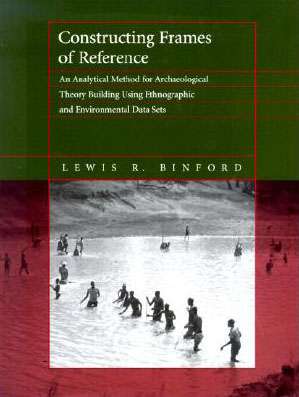SMU’s Lewis Binford left legacy of change, innovation
Lewis R. Binford, SMU Distinguished Professor of Anthropology, died April 11 in Kirksville, Mo. During his 40-year career as an archaeologist, Binford transformed scientists’ approach to archaeology, earning a legacy as the “most influential archaeologist of his generation,” according to Scientific American.
DALLAS (SMU) – Lewis R. Binford, SMU Distinguished Professor of Anthropology, died April 11 in Kirksville, Mo. During his 40-year career as an archaeologist, Binford transformed scientists’ approach to archaeology, earning a legacy as the “most influential archaeologist of his generation,” according to Scientific American.
Binford first gained attention in 1962 as an assistant professor at the University of Chicago when he wrote a path-breaking article in American Antiquity proposing that archaeologists abandon their emphasis on cataloguing artifacts and instead study what the artifacts revealed about prehistoric cultures. The proposition launched what is now known as “New Archaeology.”
“Lewis Binford led the charge that pushed, pulled and otherwise cajoled archaeology into becoming a more scientific enterprise,” says David Meltzer, Henderson-Morrison Professor of Prehistory at SMU. “The impact of his work was felt not only here in America, but around the world. Much of how we conceptualize and carry out archaeology in the 21st century is owed to Lew’s substantial legacy.”
From Alaska to Australia, Binford conducted research throughout the world, focusing much of his attention on the archaeology of hunting and gathering. He spent 20 years in remote areas of Africa, Alaska and Australia conducting research on cultural patterns of contemporary hunter-gatherers and reviving the practice of ethnoarchaeology – the study of living societies to better understand societies of the past.
| "Lewis Binford led the charge that pushed, pulled and otherwise cajoled archaeology into becoming a more scientific enterprise." — David Meltzer, Henderson-Morrison Professor of Prehistory at SMU. |
His honors included membership in the National Academy of Sciences, the Huxley Memorial Medal from the Royal Anthropological Institute of Great Britain, the Montelius Medal from the Swedish Archaeological Society and the Centennial Medal from the Portuguese Archaeological society. He received in 2008 the Society for American Archaeology’s Lifetime Achievement Award.

Binford earned a bachelor’s degree in anthropology in 1957 from the University of North Carolina and a master’s degree in 1958 and Ph.D. in 1964 from the University of Michigan. He served on the faculties of the University of Chicago, the University of California at Santa Barbara and the University of California at Los Angeles before joining the faculty at the University of New Mexico. He remained a member of the faculty there from 1968 through 1991 when he joined SMU.
“Any time a university can add a National Academy of Science-quality person to its faculty is a major gain for the university and the region,” says James Brooks, who played an important role in bringing Binford to SMU. Brooks is SMU provost emeritus and chair of the SMU’s Institute for Study of Earth and Man. “Binford brought distinction to SMU, to Dallas and the Southwest.”
Binford is survived by his wife, Amber Johnson, and his daughter, Martha Binford. Memorial contributions may be made to the Lewis R. Binford Fund for Teaching Scientific Reasoning in Archaeology through the Society for American Archaeology (900 Second Street NE #12, Washington, D.C. 20002-3560).
###
SMU is a nationally ranked private university in Dallas founded 100 years ago. Today, SMU enrolls nearly 11,000 students who benefit from the academic opportunities and international reach of seven degree-granting schools.
09284-nr-04/13/11-ng